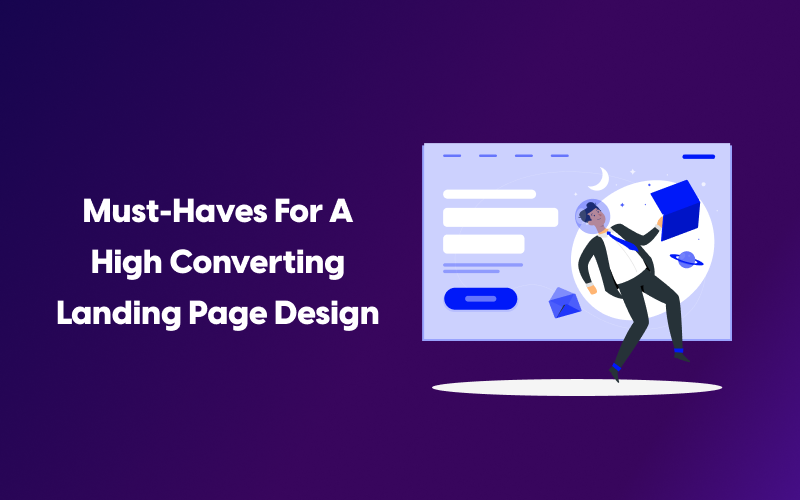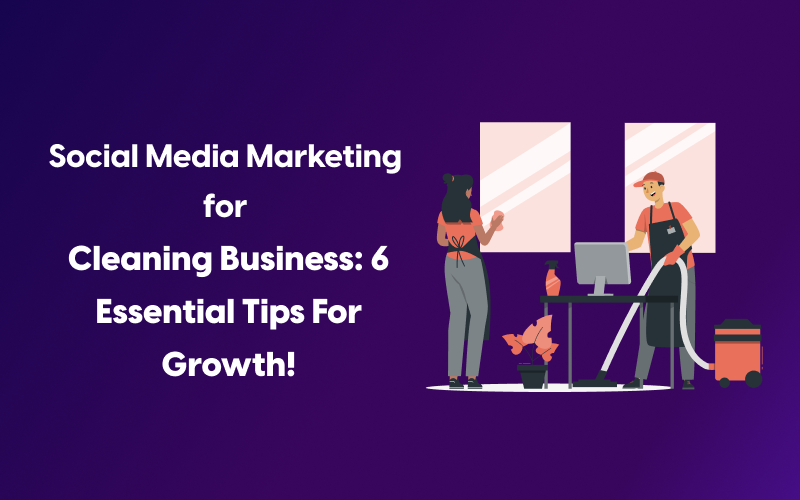Hey! Are you here to find out what CVR is in digital marketing, and how would you calculate it? Well, congratulations, you are just at the right place. CVR, or Conversion rate, is the metric that is used to define the number or percentage of people that convert by taking an action that you’ve wanted for your business. But what action? IS CVR that much important for digital marketing strategy?
Curious, Right? But we won’t make you wait anymore since we are here to let you have all the answers to your question related to CVR. So, let’s find out!
What IS CVR in Digital Marketing?
CVR, often referred to as Conversion ratio or conversion rate, is used to denote the number of people performing the conversion on your website by filling out a form or making a purchase.
No matter how many people visit your website or review your content, only those who made a desired action by signing up for a service or purchasing a product will be counted as a conversion, ultimately increasing your conversion rate.
For example, let’s say you are providing excellent photography services, your website is compelling, and you post informative blogs daily. Many visitors come across your website and read your blogs, but only a few register for your photography services; this means that only those few people will make up your conversion rate.
Why Is CVR Important in Digital Marketing?
Conversion rate is an important metric for any digital marketing strategy as it lets you know the performance of your website and digital marketing campaigns. It lets you decide whether the current efforts are suiting your business well to generate maximum conversions or whether you need to tweak your marketing strategies to increase your conversion rate.
Studies show that the average conversion rate for websites is around 2.35% of the total traffic coming to their website. While top-performing websites still manage to generate 11% conversion by maximizing their efforts and aligning their website and content to their target audience.
In fact, 70% of marketers are inclined to make important decisions for their websites on the basis of their conversion rate; as said by one of the leading digital marketing entrepreneurs Neil Patel that “Conversion rates are easily one of the most important things to track to ensure the success of your marketing campaigns – and stop you from wasting your budget.”
Therefore, it’s important to keep a check on your conversion rates, as this will be helpful in your overall business’s success.
How Is CVR Calculated in Digital Marketing?
Calculating CVR is not that much rocket science. All you need to do is to divide the number of people who made a conversion by the total number of views or the number of people who clicked on your ad. It is then multiplied by 100 to calculate the percentage of your CVR.
CVR = Number of conversions/ number of impressions *100
Let’s take an example here. Imagine you have run an ad for taking your promotional services at an amazing discount. Around 3000 people clicked on your ad, but only 100 signed up for your services. In this case, your CVR would be 3.3%.
What Is Meant By CTR and CVR?
CTR, or click-through rate, is the other important digital marketing metric that is used to define the number of clicks on your website or ad. However, it’s completely different from the conversion rate since it doesn’t rely on the conversion but only counts when a user visits your website or landing page.
Websites can have a significant amount of CTR but not a sufficient rate of CVR. It means that visitors are interested in clicking your ad and exploring your website and products but are still not ready to make a conversion or purchase.
For example, you offer hand-crafted jewelry pieces and have placed an ad for that. Many people will click on your ad in curiosity to explore your products, but only a few will buy your products. In this case, your click-through rate CTR would be higher than your Conversion rate CVR.
What Is a Good CVR Rate?
An average CVR rate for any industry must lie between 2-5% of the total traffic. That being the case, it depends on the nature of your industry and the number of potential customers that add to the factors impacting your CVR. However, you must aim for a conversion rate of 10% or more to achieve remarkable success for your business.
Let’s say a company offering industrial products would have a higher CVR than a company selling clothing goods or other broadly appealing products. It means that when your industry has lower competition and potential customers, you would be having a good CVR.
On the other hand, if your company provides services with significantly higher competition, then your CVR would be low. Let’s see what statistics show about the average CVR on the basis of industry.
According to research, It has been seen that the sporting goods industry has the lowest conversion rate of any industry, which is 2.35%. While the food and beverage industry enjoys the best CVR rate (4.95%). However, the B2B financial services industry manages to generate a whopping 11% CVR, which is insane and amazing at the same time.
How to Increase Your CVR?
Have you ever wondered what stops people from buying your products and converting? Therefore, we will provide you with amazing tips to boost your conversion rate (CVR) to let your business find a new way to ultimate success. So, let’s delve into the tips and tricks to optimize your CVR:
1. Add More Reviews to Your Website
As per the research, 93% of customers look forward to reading reviews on your website before making a purchase, while 92% say they would hesitate to convert to businesses without online reviews. This statistic impacts the importance of having reviews and testimonials on your website for user satisfaction and trust.
You need to post plenty of good customer reviews, testimonials, and feedback on your website to allow your customers to see the true help your products or services are providing to the people, which would greatly impact their decision-making process.
2. Avoid Lengthy Forms and Conversion Processes
Customers don’t like to put much effort into filling out a lengthy form when they are exploring your products or making a decision to buy them. In fact, they would just back off if you continued to ask them for detailed information. It has been seen that around 65% of customers bounce back from a website if it asks for too much personal information.
So, make your conversion processes concise by just asking for basic credentials or offering an alternative approach like signing up through Google email to avoid the hassle of filling out each field. This smooth conversion process would increase the interest of your potential customers in your products or services, ultimately increasing your conversion rate.
3. Make User Experience Worth It
Did you know that 88% of customers avoid visiting a website again after a bad experience? This emphasizes thinking about how many customers you would lose if your website is unable to provide a good overall user experience.
Make sure your website loads faster and is compatible with all devices. You must avoid offering too many options for the customers since it would negatively impact their experience on your website, making them leave with frustration. Ensure to craft compelling and clear calls-to-action (CTAs) that lead them towards a conversion process. In a nutshell, make sure to provide a simple and less-complicated user experience that encourages your user to take the desired action on your website.
4. Tell the Benefits
Many companies often make a mistake by bragging about the features of their products or services without focusing on showing the actual benefits. It would create a negative impact on your potential customers, and they would certainly not recognize the true value your products could provide them.
You must focus on writing the clear benefits and solutions you are providing to your customers by pinpointing their problems. Make sure to empathize with your audience and align your product descriptions according to their interest and preferences.
5. Perform A/B Tests to Know What’s Best
A/B testing is the simplest method to find out what is working best for your audience. For example, you can test with different ad copies, landing pages, and email copies to check which variant resonates with your audience and allows them to make a conversion on your website.
A/B testing improves your decisions making by analyzing the data and making the decision out of it. Since 91% of businesses rely on data for their future business growth, it is crucial to know the way you can gain the maximum conversions through A/B testing results.
6. Place Your CTAs at Front
Imagine your blogs are tempting, and your products and services are compelling, but users are still struggling to find your CTA for registration or purchasing. This approach will make your customers leave without a conversion, increasing your bounce rate and affecting your overall website’s reputation.
Make sure to place your CTAs in the right places on your website or landing page, which allows your user to easily click on your CTA buttons without having to find them all over your website.
7. Improve your Website’s SEO
SEO is important to gain maximum traffic on your website leading to a higher CVR rate. Higher-ranked websites on Google are significantly enjoying higher conversion rates than the ones having lower search engine rankings.
When your website appears higher on the results page, it would be likelier that potential customers will click on your website and make a conversation rather than search for another option. That’s why it’s important to keep an eye on your website’s rankings and SEO performance to achieve ultimate traffic and a higher conversion rate.
8. Offer Incentives and Discounts
To yield tons of conversions, you need to offer exciting offers, discounts, and promotional codes to entice your audience and persuade them to take your products and services. However, it completely depends on your marketing strategy and business size to offer heavy discounts or simple free trial or testers options. But make sure to create exclusivity in your discounts by making them time-bound, like providing a limited-time offer.
Conclusion:
You’ve seen the true value of CVR in digital marketing, as it is important for maximizing the performance of your digital marketing strategy. Additionally, you must have understood the steps to optimize your CVR; now, get ready to invest your knowledge in developing a robust strategy for boosting your CVR and achieving your ultimate business milestones.
While if you ever need help in this journey towards increasing your conversion rate, you may ask for our help regarding digital marketing services; we’ll be pleased to help you out!





